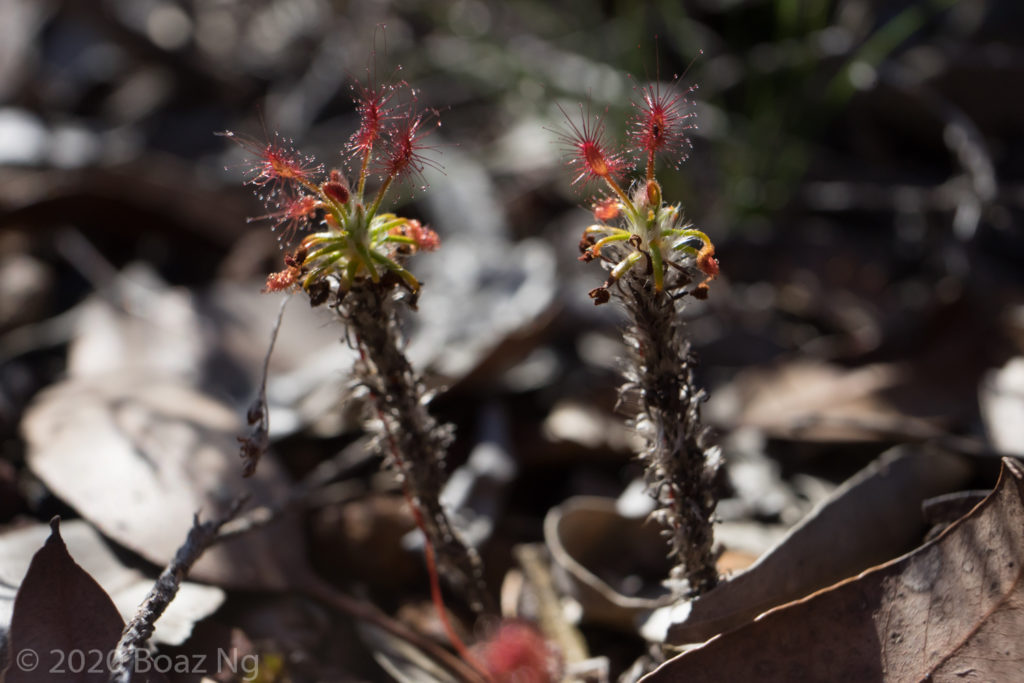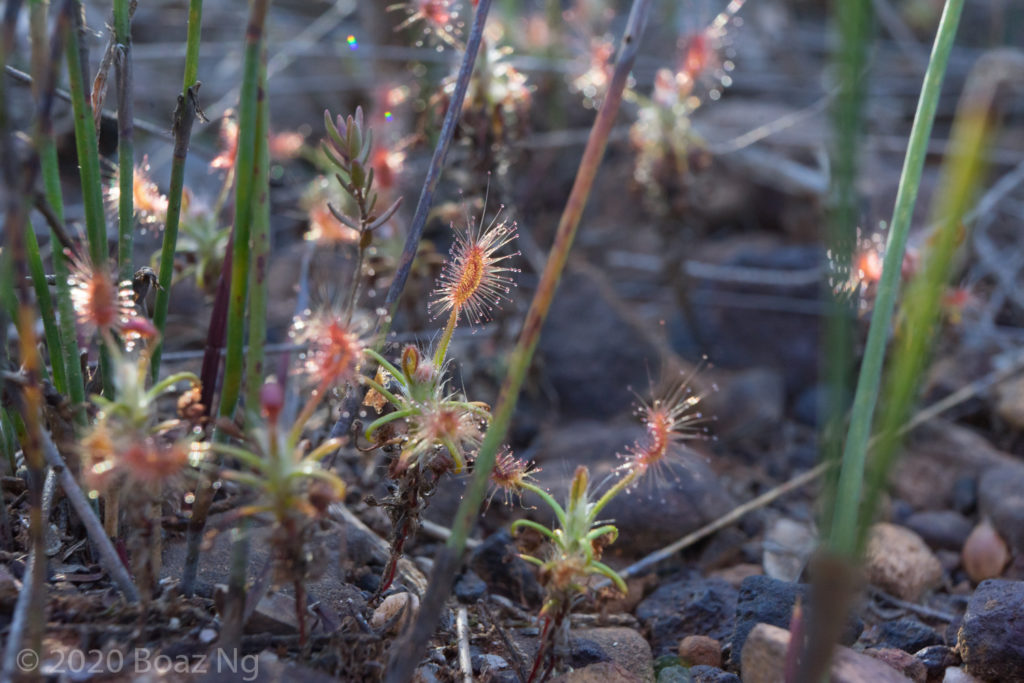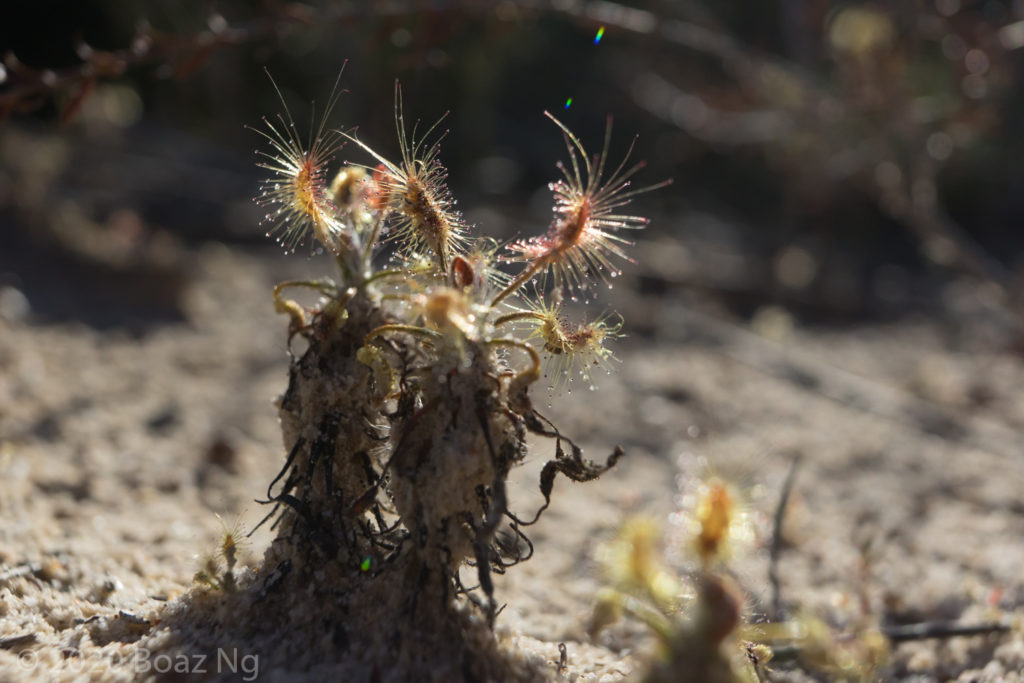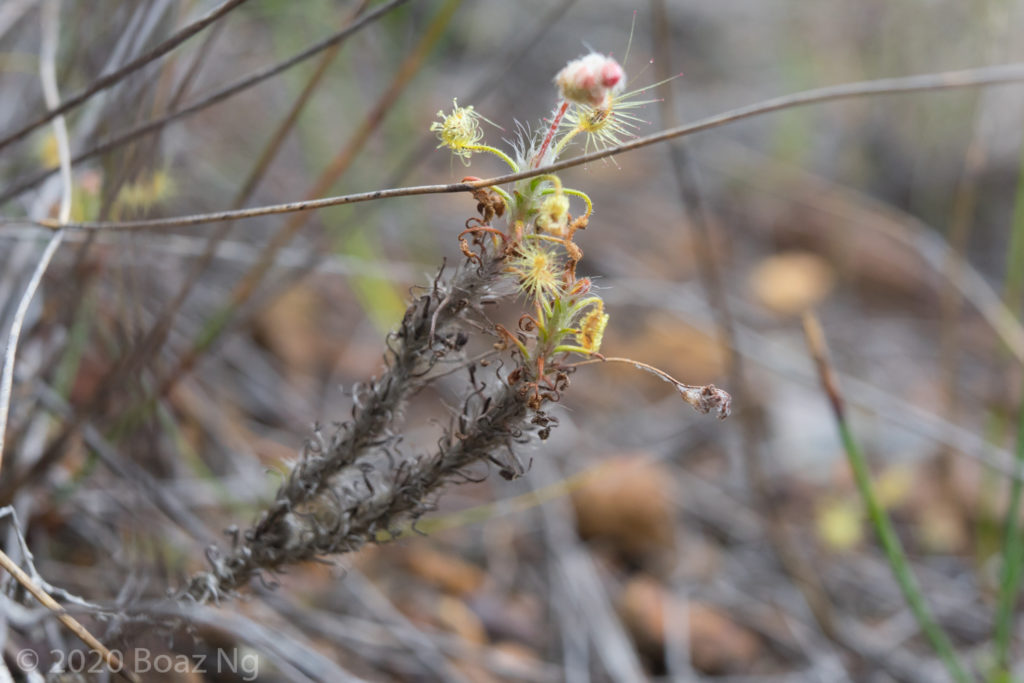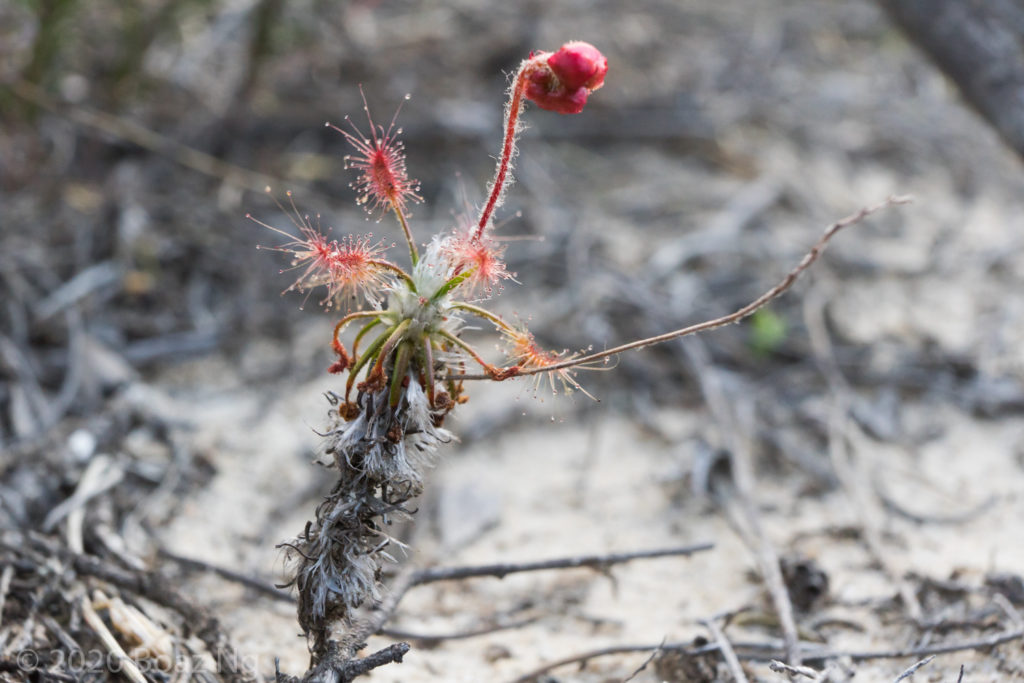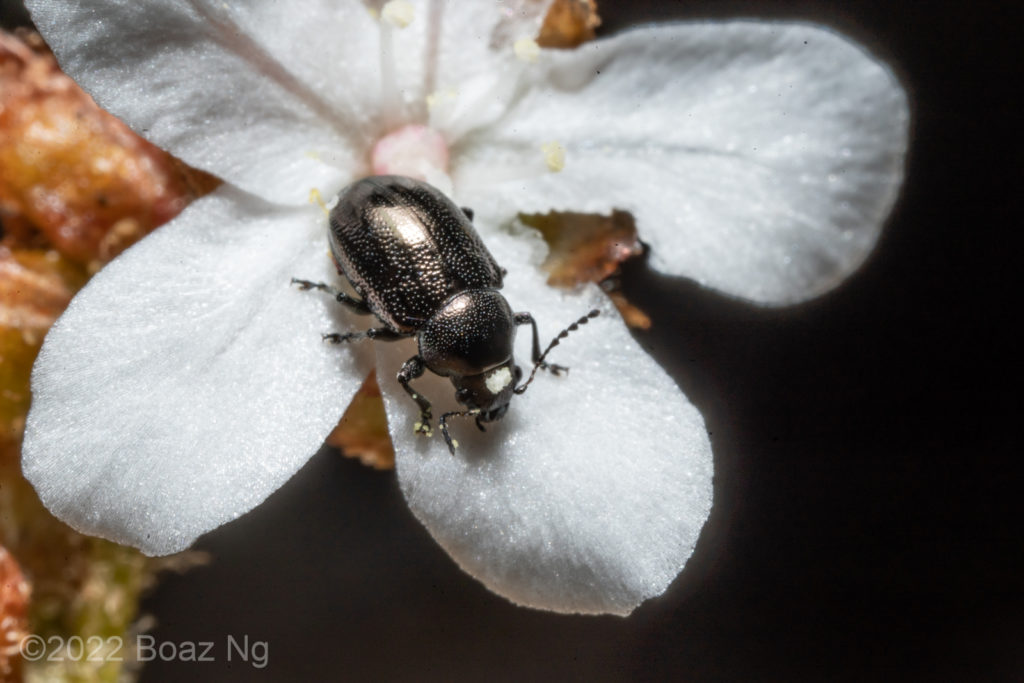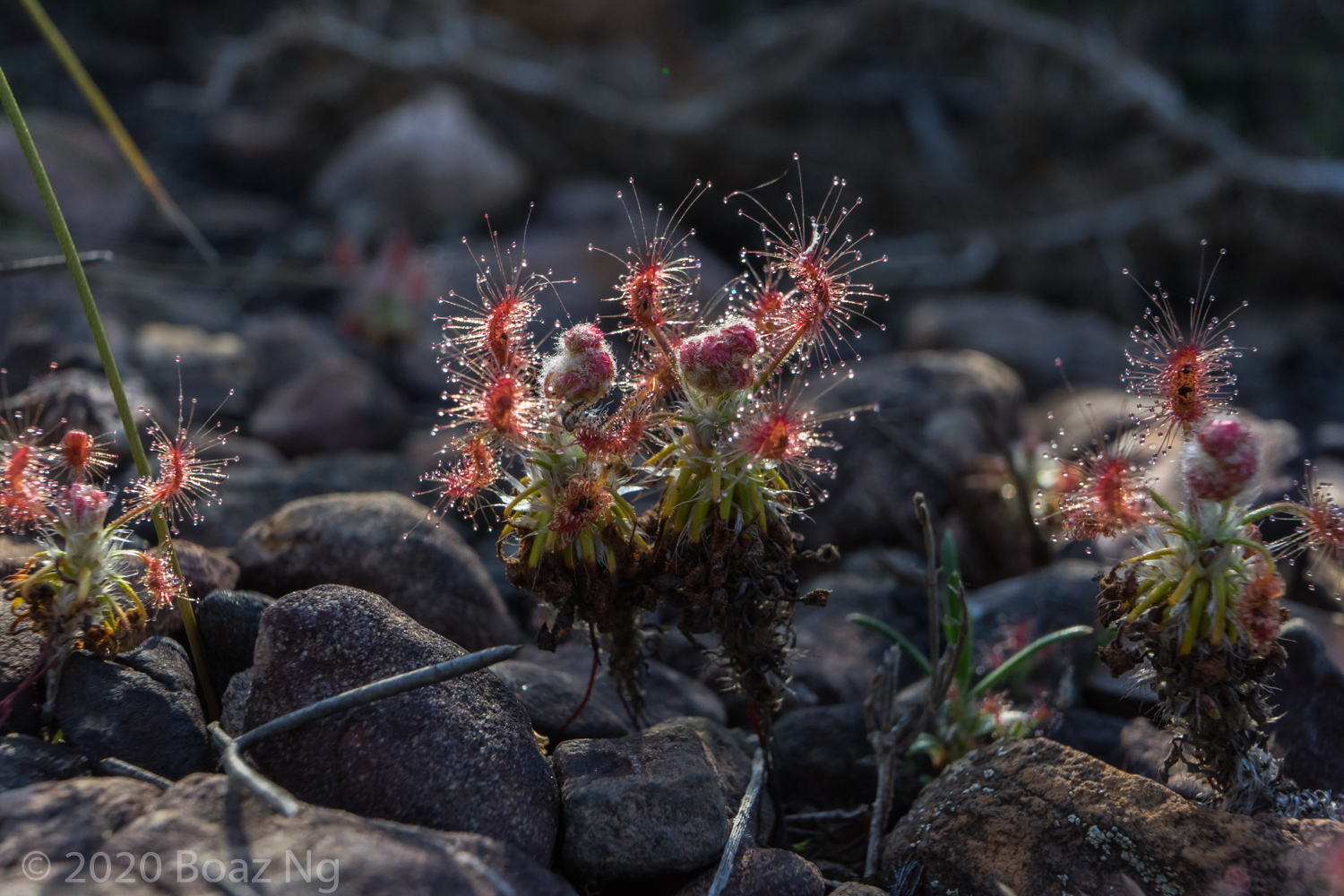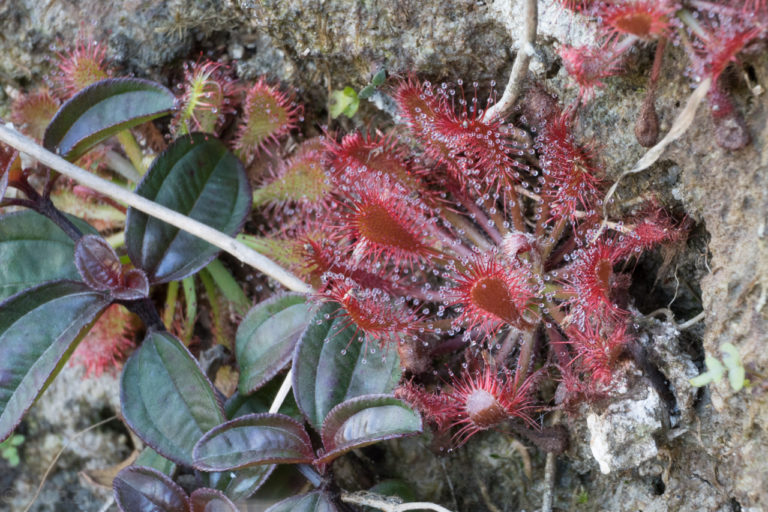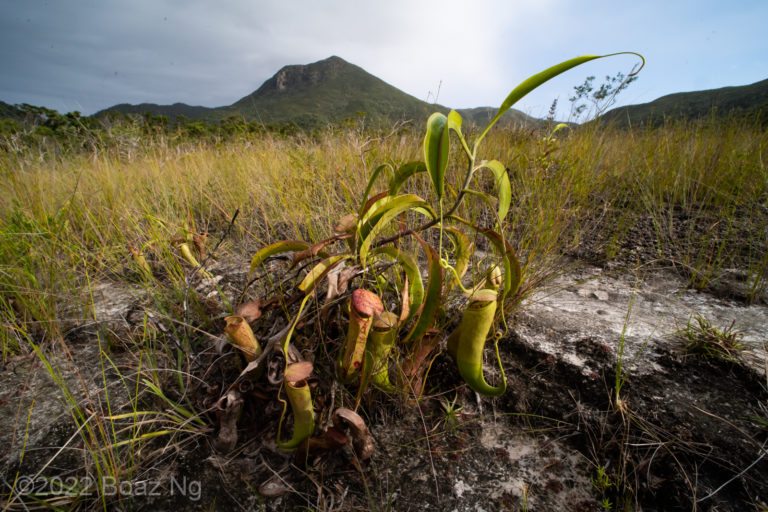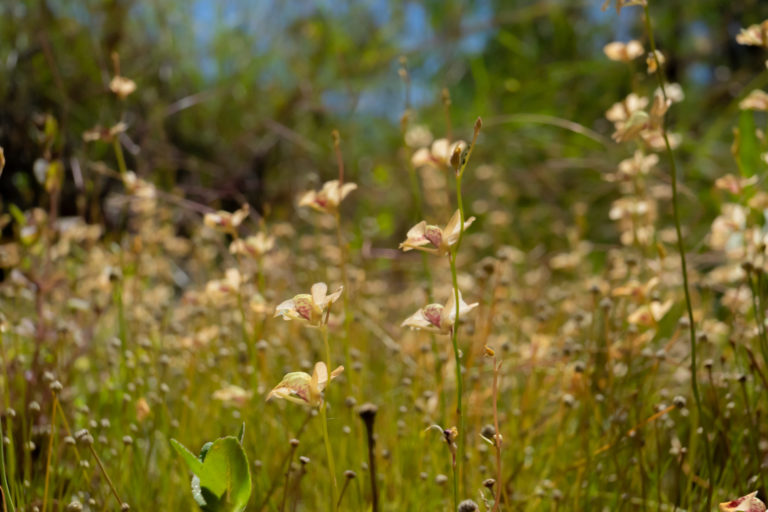Drosera scorpioides is a pygmy sundew endemic to south-west Western Australia. The species is notable for forming a tall stem of old growth, topped by an attractive raised rosette of leaves. As its specific epithet suggests, these leaves are reflexed upwards in an imposing fashion, rather like the reared tail of a scorpion. The petioles are covered in stalked glands. The entire floral scape and sepals have a thick layer of long wool-like hairs that are tipped in glands.
The species grows in pebbly laterite outcrops and sand amongst heath and open woodland. It can be found along the south coast, and up through the Wheatbelt to the Darling Scarp.
Drosera scorpioides is usually distinguishable from other pygmy species by its long stem and reflexed laminae. It is superficially similar to other stem-forming species like D. lasiantha, D. dichrosepala and D. gibsonii. D. scorpioides is separated in the first instance by its woolly scapes, a feature shared with D. lasiantha. It is distinguished by its long, gland-tipped hairs (the woolly hairs on D. lasiantha do not have glands and D. lasiantha has short glandular hairs which are absent on D. scorpioides).




